
Electrochemical Science Advances
Scope & Guideline
Catalyzing Research for a Sustainable Future
Introduction
Aims and Scopes
- Electrocatalysis and Energy Conversion:
The journal publishes research on electrocatalytic processes, including hydrogen evolution, oxygen reduction, and CO2 reduction, highlighting the development of new catalysts and mechanisms for energy conversion. - Electrochemical Sensors and Biosensors:
A significant area of focus includes the design and application of electrochemical sensors for detecting biological and chemical substances, employing nanomaterials and innovative transducer technologies. - Advanced Electrochemical Materials:
Research on novel materials for batteries, supercapacitors, and fuel cells is prominent, detailing advancements in electrode materials, electrolyte formulations, and composite structures. - Interfacial Electrochemistry:
Studies on the interactions at the electrode/electrolyte interface, including solid-liquid interfaces and the role of surface modifications, are central to understanding and improving electrochemical performance. - Theoretical and Computational Electrochemistry:
The journal encourages contributions that utilize computational models and simulations to predict electrochemical behaviors, assisting in the rational design of new materials and processes. - Historical Contributions to Electrochemistry:
In addition to contemporary research, the journal also acknowledges historical figures and their contributions to the field of electrochemistry, providing context and appreciation of the discipline's evolution.
Trending and Emerging
- Sustainable Energy Solutions:
There is a significant increase in research focused on sustainable energy technologies, particularly in electrochemical CO2 reduction and hydrogen production, aligning with global efforts to combat climate change. - Integration of AI and Machine Learning:
The application of artificial intelligence and machine learning techniques to optimize electrochemical processes and materials is an emerging trend, showcasing the integration of computational methods with experimental research. - Nanostructured and Hybrid Materials:
Research on nanostructured materials and hybrid composites is on the rise, emphasizing their enhanced properties and functionalities for electrochemical applications in batteries, supercapacitors, and sensors. - Electrochemical Wastewater Treatment:
There is a growing interest in the use of electrochemical methods for wastewater treatment and pollutant removal, reflecting a shift towards environmentally friendly technologies. - Bioelectrochemistry and Biocatalysis:
The field of bioelectrochemistry, including the use of enzymes and microorganisms in electrochemical systems, is gaining momentum, highlighting the potential for sustainable processes in energy and sensing applications.
Declining or Waning
- Traditional Electrochemical Analysis Methods:
There is a noticeable decline in papers focusing on traditional electrochemical techniques such as polarography and simple voltammetry, as researchers increasingly explore more sophisticated methods and technologies. - Basic Electrochemical Theory:
Research that primarily focuses on fundamental electrochemical theory without application-oriented insights seems to be waning, as the field moves towards more applied and interdisciplinary approaches. - Conventional Materials for Energy Storage:
The exploration of conventional materials for batteries and supercapacitors, such as basic carbon and metal oxides, is less frequent, with a shift towards innovative materials, including nanomaterials and composites. - Static Electrochemical Systems:
Research on static electrochemical systems is decreasing, with a growing emphasis on dynamic systems, operando studies, and real-time analysis of electrochemical processes.
Similar Journals
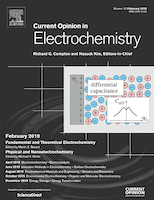
Current Opinion in Electrochemistry
Uncovering Trends in Electrochemical ScienceCurrent Opinion in Electrochemistry, published by Elsevier, stands at the forefront of research in the fields of Analytical Chemistry and Electrochemistry. With an impressive Impact Factor reflected in its Q1 quartile rankings for both categories, this journal holds a significant place among its peers, ranking 9th in Analytical Chemistry and 8th in Electrochemistry according to Scopus metrics. Launched in 2017, it has rapidly become a vital platform for the dissemination of cutting-edge insights, reviews, and critical assessments that shape the future directions of electrochemical research and applications. As researchers, professionals, and students engage with its content, they find not only a repository of knowledge but also a source of inspiration for innovative experiments and applications. Readers can explore the wealth of information this journal provides to stay updated with contemporary trends and emerging technologies in electrochemistry. With a commitment to high-quality scholarly content, Current Opinion in Electrochemistry is your essential guide to the evolving landscape of electrochemical science.

Advanced Science
Fostering Innovation Across DisciplinesAdvanced Science, published by Wiley, stands as a premier open-access journal since 2014, dedicated to fostering innovative research and insights across multiple disciplines including Biochemistry, Genetics and Molecular Biology, Chemical Engineering, Engineering, Materials Science, Medicine, and Physics and Astronomy. Based in Germany, this journal has quickly established itself in the academic community, receiving high recognition with a Q1 ranking in its respective categories as of 2023. With its impressive Scopus rankings, including #1 in Biochemistry, Genetics and Molecular Biology and #3 in General Engineering, Advanced Science plays a pivotal role in disseminating groundbreaking scientific knowledge to researchers, professionals, and students alike. By embracing an open access model, it ensures that high-quality research is readily available to a global audience, thus facilitating advancements in science and engineering fields.
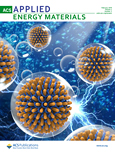
ACS Applied Energy Materials
Exploring Cutting-edge Advances in Energy SystemsACS Applied Energy Materials, published by the American Chemical Society, is a premier journal dedicated to the cutting-edge fields of energy materials, chemical engineering, and electrochemistry. With an impressive impact factor and consistently ranked in the Q1 category across multiple disciplines—including Chemical Engineering, Electrical and Electronic Engineering, and Materials Chemistry—this journal serves as a pivotal platform for researchers and professionals focused on innovative solutions for energy systems and materials science. Since its inception in 2018, ACS Applied Energy Materials has been committed to disseminating high-quality research that addresses pressing energy challenges, promoting sustainability and efficiency in various applications. Its competitive Scopus rankings reflect the journal's influence and relevance within the academic community, making it an essential resource for anyone looking to stay at the forefront of energy materials research.
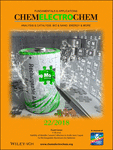
ChemElectroChem
Advancing the frontiers of catalysis and electrochemistry.ChemElectroChem is a premier open-access journal published by WILEY-V C H VERLAG GMBH, focusing on the interdisciplinary fields of catalysis and electrochemistry. Established in 2014 and actively publishing until 2024, this journal boasts an impressive reputation, currently ranked in the Q2 category for both catalysis and electrochemistry according to the 2023 metrics. With an Scopus ranking placing it in the 74th percentile for Electrochemistry and 61st for Chemical Engineering and Catalysis, ChemElectroChem serves as an essential platform for researchers, professionals, and students dedicated to advancing knowledge and fostering innovation in these critical scientific domains. Since its transition to open access in 2023, the journal aims to maximize the dissemination of cutting-edge research and facilitate the exchange of ideas among global scholars, thereby enhancing the accessibility and impact of high-quality science within the community. For those engaged in the ever-evolving conversations around energy storage, conversion processes, and sustainable solutions, ChemElectroChem is an invaluable resource.
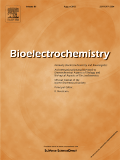
BIOELECTROCHEMISTRY
Advancing the Frontiers of Bioelectrochemical ResearchBIOELECTROCHEMISTRY, published by Elsevier Science SA, is a leading academic journal that focuses on cutting-edge research in the fields of biophysics, electrochemistry, and miscellaneous medicine with a commendable impact factor reflecting its significance in the scientific community. Established in 2000 and continuing until 2025, the journal resides in the Netherlands and has been ranked in the Q2 category across various relevant disciplines, such as Biochemistry, Genetics and Molecular Biology, and Physical and Theoretical Chemistry, showcasing its quality and relevance. With a Scopus ranking that places it among the top journals in its categories—including an impressive 12th rank in Electrochemistry—BIOELECTROCHEMISTRY serves as a critical platform for researchers and professionals seeking to disseminate and engage with innovative findings. While the journal does not offer Open Access options, its reputation and reach make it an essential reference point for anyone involved in bioelectrochemical studies. The journal’s commitment to advancing knowledge in electrochemical applications in biological systems ensures its esteemed position in academia.
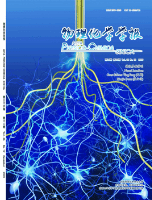
ACTA PHYSICO-CHIMICA SINICA
Connecting researchers with groundbreaking discoveries.ACTA PHYSICO-CHIMICA SINICA, published by PEKING UNIV PRESS, is a prestigious journal focused on the fields of Physical and Theoretical Chemistry, boasting an impressive impact factor as reflected in its 2023 Q1 ranking in this domain, placing it among the top 5% of journals in the subject area. With its origins dating back to 1996, the journal serves as a vital platform for the dissemination of cutting-edge research, encompassing a broad range of topics from molecular dynamics to thermodynamics and quantum chemistry. Researchers, professionals, and students are provided with valuable insights through peer-reviewed articles, making it an indispensable resource for advancing knowledge and sparking innovation in the discipline. While this journal does not offer Open Access options, its rigorous editorial standards and influential contributions continue to shape the landscape of Physical and Theoretical Chemistry globally. For submissions or further information, please refer to the editorial office at Peking University, Chemistry Building, Beijing, China.

Analytical & Bioanalytical Electrochemistry
Fostering Collaboration in Electrochemical ResearchAnalytical & Bioanalytical Electrochemistry is a pivotal journal dedicated to the advancement of research and innovation in the fields of analytical chemistry and electrochemistry. Published by the University of Tehran, Faculty of Chemistry, Center of Excellence in Electrochemistry, this journal has been contributing to the scientific community since its inception in 2009 and continues to be a critical platform through 2024. With an ISSN of 2008-4226, it focuses on a variety of topics including electrochemical sensors, bioanalytical techniques, and innovative methodologies in electrochemical analysis. Although it currently holds a Q4 quartile ranking in both analytical chemistry and electrochemistry categories, its unique insights and research findings are essential for advancing knowledge and fostering interdisciplinary collaboration within the scientific community. Researchers, professionals, and students engaged in these dynamic fields will find valuable resources and contribute to the ongoing discourse by publishing their work in this journal. We invite you to explore and engage with the diverse content that Analytical & Bioanalytical Electrochemistry offers to enhance your research and professional development.

RUSSIAN JOURNAL OF ELECTROCHEMISTRY
Showcasing Excellence in Electrochemical ScholarshipThe Russian Journal of Electrochemistry, published by Pleiades Publishing Inc, is a reputable scientific resource that caters to the dynamic field of electrochemistry. Since its inception in 1996, this journal has become a platform for the dissemination of cutting-edge research, exploring both foundational studies and innovative applications within electrochemical science. Despite currently holding a Q4 categorization in its field, the journal is dedicated to enhancing its scholarly impact and visibility, reflecting its commitment to fostering advancements in electrochemical technologies. With its ISSN 1023-1935 and E-ISSN 1608-3342, the journal strives to reach a global audience of researchers, professionals, and students alike. Though the journal is not open access, its contents are crucial for anyone looking to stay at the forefront of electrochemical research and developments. The journal's editorial board includes well-respected experts, ensuring that published articles contribute significantly to the scientific community and pave the way for future innovations in the field.

Journal of the Korean Electrochemical Society
Fostering Excellence in Electrochemical Research and ApplicationsJournal of the Korean Electrochemical Society (ISSN: 1229-1935, E-ISSN: 1229-1935) stands as a prominent publication in the rapidly evolving field of electrochemistry. Published by the prestigious Korean Electrochemical Society, this journal serves as a vital platform for researchers, professionals, and students eager to disseminate and access cutting-edge studies related to electrochemical processes, materials, and technologies. With an emphasis on promoting innovative research and practical applications, the journal aims to foster collaboration and knowledge exchange within the global electrochemistry community. Although not an open access journal, it provides comprehensive and rigorous peer-reviewed content that ensures the highest scientific quality, making it a valuable resource for anyone involved in the field. Located in Seoul, South Korea, it continues to contribute significantly to the advancement of electrochemical sciences, addressing key challenges and developments that shape the future of technology and environmental sustainability.

Portugaliae Electrochimica Acta
Catalyzing Discovery in Electrochemical ProcessesPortugaliae Electrochimica Acta is a distinguished journal dedicated to the field of electrochemistry, published by the SOCIEDADE PORTUGUESA ELECTROQUIMICA. With a notable ISSN of 0872-1904, this journal serves as a vital resource for researchers, professionals, and students interested in advancing their understanding of electrochemical processes. Though it is currently categorized in Q4 in the 2023 Electrochemistry rankings, the journal contributes significantly to the academic discourse from its base in Coimbra, Portugal. The journal's timeline spans actively from 2008 to 2025, ensuring a sustained engagement with emerging research. While the journal does not offer open access options, it remains an authoritative source noted for promoting innovative electrochemical research and fostering academic connections within the discipline. Researchers are encouraged to submit their findings and explore the latest contributions to this expanding field.